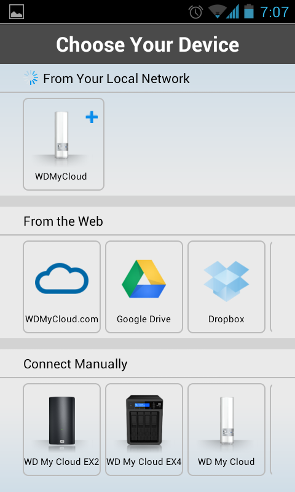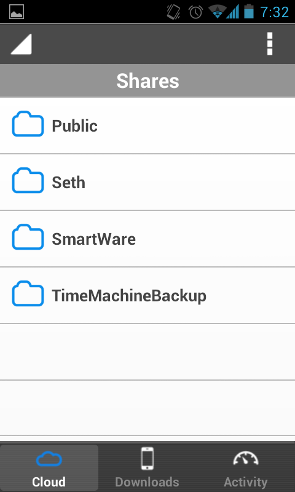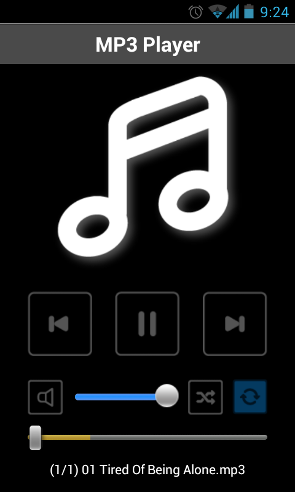Even as cloud storage has exploded, however, there are many skeptics who believe that entrusting your data to a cloud service is foolish. For one thing, you’re giving your precious data (be it family photos or company trade secrets) to a third party, and beyond that security is a concern, vendor lock-in is a possibility, and more recently, many are growing concerned that the government has too much access to data stored on others’ servers. Cloud storage also tends to be rather expensive, should you need to store large amounts of data.
Thus, the diehard proponents of local storage have legitimate concerns when they say they’re distrustful of the cloud. But on the other hand, there are problems with relying solely on local storage, too. You have to diligently manage your own backups, and unless you have an offsite backup, all of your copies are in one geographical location. If your house burns down, or floods, or is burgled, you could easily lose everything.
The middle ground is setting up your own NAS file server with redundancy, but that too can be problematic. Although there are some consumer-friendly options out there, file servers can be tricky to effectively set up and tiresome to manage. Western Digital has developed a solution called WD My Cloud that seeks to nullify part of this problem while also providing a smattering of additional features.
|
| Capacity: Interface: Ports: OS Support: Processor: Included software: Weight: Dimensions: Warranty: Price: | 2TB (as configured) Gigabit Internet Ethernet x1 USB 3.0 x1 Power supply port Windows XP(SP3)/Vista/7/8 Mac OS X Mountain Lion/Snow Leopard Dual-core WD My Cloud WD My Cloud Dashboard WD SmartWare Pro 2.12 lb 6.7 x 5.5 x 1.9 inches (HxDxW) 2 years limited ~$140 At Amazon.Com |
WD My Cloud is a personal private cloud. At its core it’s essentially a NAS, but it’s designed to be incredibly simple to set up, and managing it requires almost no expertise. Even better, adding devices is designed to be super simple.
We’ll get into the nitty gritty in the subsequent pages, but the idea is that you connect the My Cloud--which just looks like any of WD’s desktop external hard drives--to your home router. My Cloud, which comes in 2TB , 3TB, and 4TB capacities, is ideal for stashing all of a family’s files, including truckloads of photos and video. You can use it as a file repository for your family’s PCs and mobile devices, thus allowing you to keep those devices less cluttered with files, while ensuring that all your data is in a single, always-available location. It’s also easy to pull the files you have stored in “public” cloud storage such as Dropbox onto My Cloud.
Another nifty feature is that instead of sending files via email, My Cloud lets you send links to files, which the recipient can then open at their convenience. You can stream the audio and video stored on My Cloud, and you can open and edit files just as you would if they were stored locally.
My Cloud is even accessible via TVs, media players, and game consoles, and if you need more storage than My Cloud offers, you can connect an external hard drive via its USB 3.0 port to expand its capacity. Another nifty feature is that instead of sending files via email, My Cloud lets you send links to files, which the recipient can then open at their convenience. You can stream the audio and video stored on My Cloud, and you can open and edit files just as you would if they were stored locally.
You manage the My Cloud and other connected devices via the My Cloud Dashboard and use the WD My Cloud desktop app to manage your stored files and folders. Both pieces of software offer intuitive interfaces that have essentially zero learning curve, as we'll show you next...
It doesn’t take much to set up and configure My Cloud. After downloading the desktop software (WD My Cloud Dashboard) and installing it on a PC, we plugged My Cloud into an outlet and connected it to our router using the included Ethernet cable. The software found My Cloud right away, and then it was time to set up our personal private cloud.
To do so, we entered our name and an email address; after receiving a confirmation email, we created a device password, and then we were able to access our My Cloud.
WD My Cloud Dashboard has several tabs: Home, Users, Shares, Cloud Access, Safepoints, and Settings. The Home tab gives you sort of a system overview if you will that consists of your available capacity, how many devices you have set up with My Cloud, information about your physical My Cloud device such as the most recent firmware, how many “shares” you have, and more.
Under the Users tab, you can add more user accounts and determine those users’ access levels. Adding a new user is simply matter of entering someone’s first and last names, email address, and that person’s device password. As far as your administration duties go, that's all you have to do.
There are four “shares” that our device set up by default. There’s a Public share, one for our specific PC, one for WD SmartWare backups (if you have the software), and one for Time Machine backups (for those using a Mac). From this tab you can change the name of each share, adjust the level of access, and determine whether or not a given folder can serve up media.
You can manage who can access your personal cloud and with what devices from the Cloud Access tab. Users that have access can tap into My Cloud via a web interface at WDMyCloud.com. Under the Safepoints tab, you can set My Cloud to take snapshots of your data for recovery in the event the My Cloud fails; you can select a USB drive or a compatible storage device on your network for the task.
There’s another piece of software you can use to work with files and folders called, appropriately enough, WD My Cloud. This software offers a simple drag-and-drop interface for adding files and folders to various shares, and it’s terribly simple to add or delete new folders and subfolders.
Adding devices is easy enough, although it’s a bit inconsistent depending on the type of device you want to add. To add, for example, a mobile device, you need to download an iOS or Android app from those respective app stores; launch the My Cloud Dashboard on a PC; click Cloud Devices and generate a 12-digit code; and then pull up the app on your smartphone or tablet and enter that code. It feels like that’s one too many steps, but perhaps we’re being a little nit-picky.
Saving files from a smartphone to My Cloud was smooth and simple. My Cloud pops up on the smartphone as one of the options when you want to share a photo or video. The only oddity is that in the app, those files are saved to a Download folder, which doesn’t exist on the desktop My Cloud app; thus, you have to go to that download folder in the mobile app and copy and paste items to the appropriate folder.
One nice surprise was that I noticed that My Cloud showed up on my Samsung Smart TV as an input option. The TV found the My Cloud device on the network with no action on my part (because DLNA media streaming was enabled by default in the My Cloud Dashboard), appearing as one of the input choices.
When I selected My Cloud as the TV’s input, I was able to access all the music, photos, and video stored on the drive.
Measuring performance on a device such as the My Cloud that communicates strictly over an Internet connection is a bit dicey. Because My Cloud operates over a network instead of a local storage interface, we aren’t able to run our normal spate of benchmarks.
However, we want to give you a sense of how My Cloud performs, so we conducted timed file transfer tests and also used versions of ATTO and CrystalDiskMark that can run on mapped network drives.
|
For comparison purposes, we clocked several file transfers of different sizes from an external hard drive to our test PC, and then we repeated the process by moving those same files from the PC to the My Cloud and recorded the time each one took. Thus, we got a sense of how transfer times of local storage via a USB 3.0 interface compared to those of My Cloud from a PC.
As expected, transfers from an external drive to a PC happen at a blistering speed compared to those to My Cloud. Note that as the size of the file transfer increases, the time it takes for the PC-to-My Cloud transfers to finish compared to the local USB 3.0 connection increases by a larger delta. Still, 89 seconds for a large (3.33GB) chunk of files is nothing.
|
ATTO is a "quick and dirty" type of disk benchmark that measures transfer speeds across a specific volume length. It measures transfer rates for both reads and writes and graphs them out in an easily interpreted chart. We chose .5kb through 8192kb transfer sizes and a queue depth of 6 over a total max volume length of 256MB. ATTO's workloads are sequential in nature and measure bandwidth, rather than I/O response time, access latency, etc.
My Cloud posted some imbalanced read and write speeds here. With smaller file sizes it delivered slower read/write speeds between 1.9/1.3 MBps and 6.2/6.5 MBps, but once the device got cranking it reached as high as 49 MBps (writes) and 74 MBps (reads). Mostly, though, the test results hovered between 50-70 MBps for reads and 30-37 MBps for writes. For comparison, a decent external hard drive with a USB 3.0 interface would turn in read/write speeds closer to 100-120 MBps.
|
CrystalDiskMark is a synthetic benchmark that tests both sequential and random small and mid-sized file transfers. It provides a quick look at best and worst case scenarios with regard to drive performance, best case being larger sequential transfers and worse case being small, random transfers.
You won't get the same kind of read and write speeds out of the WD My Cloud, as you would with a locally attached drive, but its performance across the network was acceptable. Summary: Western Digital promised an easy to use personal cloud with the My Cloud device, and that’s precisely what they delivered. Performance in terms of file transfer speeds isn’t all that close to what you’d find with locally connected storage, but at least all the transfer times we checked out were reasonable. (It's also worth noting that at times you'll be limited by the speed of your Internet connection as opposed to the My Cloud itself, such as when you're opening up files on your mobile device while out and about.) What’s more important is that My Cloud serves up your files when you want them and via any number of devices, including smartphones, smart TVs, and PCs. Even better, My Cloud is a cinch to set up, and adding devices is a quick and relatively painless process. Uploading files to My Cloud takes a little longer than you might like, but the interface is simple to use and easy to manage.
What My Cloud does not offer, however, is offsite backup. As we mentioned in the beginning of this article, one of the problems of local storage is that it’s vulnerable to fires, floods, and thieves, and My Cloud still suffers from those risks. However, because My Cloud is so easy to use, one could use it as offsite backup by parking it at a trusted location with a reliable internet connection. You can still manage the device and everything on it from your own home PC, and if you maintain a copy of all your files on local storage, you’d effectively have a disaster recovery solution with the My Cloud.
My Cloud offers a compelling service, and it’s nice to see a very simple way for average consumers to set up and manage a personal cloud. All things considered, we were honestly a bit surprised that My Cloud costs just $149.99. For the storage capacity alone (2TB) that’s not a terrible deal, but considering all of the conveniences My Cloud affords, that’s simply a great deal.

| | |
|
|










0 comments:
Post a Comment